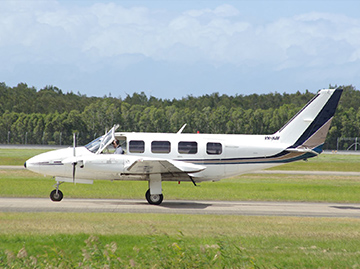This incident shows how a pilot’s good fuel management ensured the safe landing of a Piper Chieftain aircraft after an unexpected incident.

On 12 October 2015, the pilot and three passengers were conducting a survey flight over the southern highlands area of New South Wales.
After departure, the pilot reported that clouds (both towering cumulus and cumulus) were beginning to form in the area, producing some light turbulence. The pilot remained concerned about one of the passengers, seated at the rear of the aircraft, who appeared to find the conditions difficult to tolerate.
The pilot’s workload remained high. Apart from flying to each of the pre-arranged waypoints, additional landmarks were being relayed to the pilot from the client’s operator on the ground.
The pilot kept a very detailed fuel log, and continually cross-checked the fuel in each of the four fuel tanks. The weather had deteriorated even further as the pilot prepared to fly to the last waypoint before a return to Bankstown. The pilot delayed a scheduled fuel tank change to maximise the fuel remaining in the main (inboard) tanks.
As the pilot was maneuvering around large banks of cloud and thunderstorms, the left auxiliary (outboard) tank ran dry and the engine surged. The aircraft yawed. The pilot reacted immediately and changed the fuel selectors onto the main tanks. The engine responded and power was restored. The aircraft returned to Bankstown without incident.
In this incident, the pilot followed all the key suggestions in the ATSB’s Avoidable Accident Series No 5 – Starved and exhausted: Fuel management aviation accidents. These being
- Knew exactly how much fuel was on board
- Knew how much / what rate fuel was being consumed
- Knew the aircraft fuel system and keep a detailed fuel log of the four tanks during flight.
Despite a high workload, deteriorating weather, and untimely distractions the pilot was well prepared to handle an unplanned outcome of temporary fuel starvation of the left engine.
Read the report: Fuel management issue involving a PA31-350, VH-HJH, 19 km north of Goulburn Airport, New South Wales, on 12 October 2015


